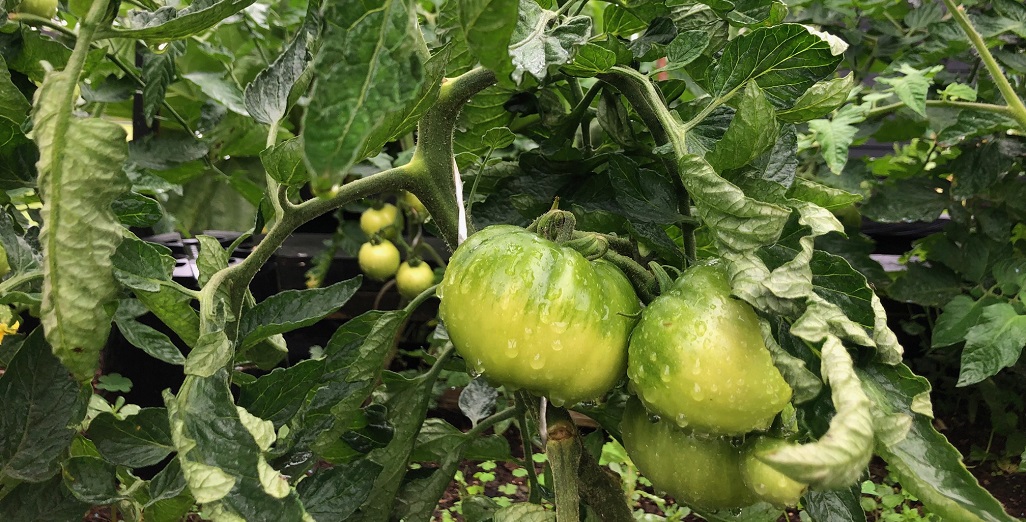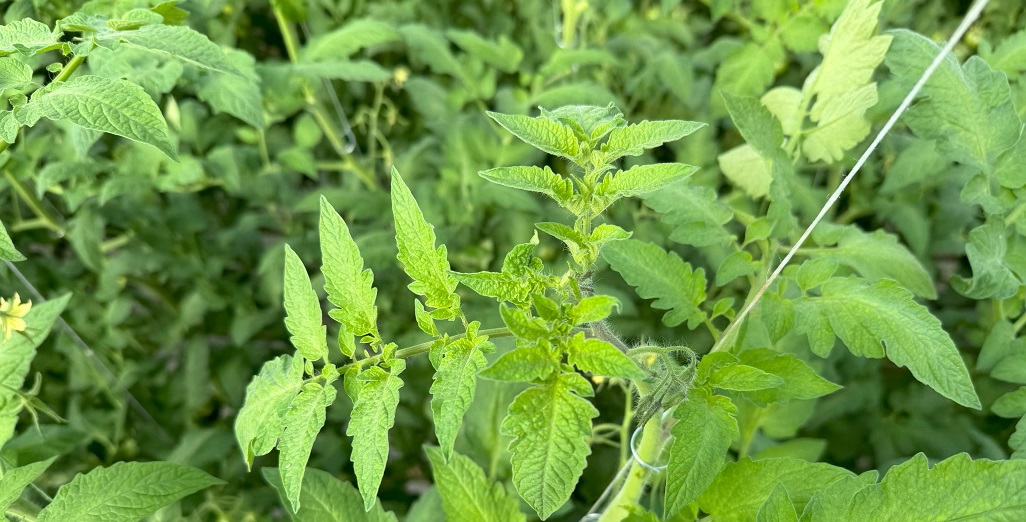Sign up here to subscribe to the Grower2grower Ezine. Every two weeks you will receive new articles, specific to the protected cropping industry, informing you of industry news and events straight to your inbox.
Jun 2018
Chlorosis in Tomatoes

Chlorosis in Tomatoes
Chlorosis is caused by iron deficiency.
Symptoms for iron deficiency in plants: The most obvious symptom of iron deficiency in plants is commonly called leaf chlorosis. This is where the leaves of the plant turn yellow, but the veins of the leaves stay green. Typically, leaf chlorosis will start at the tips of new growth in the plant and will eventually work its way to older leaves as the deficiency gets worse.
What does iron do for plants? Iron is a nutrient that all plants need to function. Many of the vital functions of the plant, like enzyme and chlorophyll production, nitrogen fixing, development and metabolism are all dependent on iron. Without iron, the plant simply cannot function as well as it should.
If iron is added in the form of a chelate then you should have enough iron in your substrate. If you do have Chlorosis then the plant is struggling to access the iron, in some cases the PH around the rootzone is too high therefore blocking the iron availability. Another cause could be that your substrate is too wet. NFT systems commonly have issues with Chlorosis and need ways of aerating their feeding systems. Not only will a substrate, which is too wet, cause a deficiency like Chlorosis but also cause root disease, especially at this time of the year. Too much phosphorous can also block the uptake of iron by the plant and cause Leaf Chlorosis.
Altering PH around the rootzone and changing the water content of substrate is relatively straight forward. Using additional very small amounts of ammonium nitrate or ammonium sulphate to your fertilizer solution can help reduce the PH around the rootzone. I have always been advised to have 5.8-6 PH on and similar coming off or around the rootzone. If your PH is high in your runoff don’t be surprised to see the reduction nutrient uptake like iron. If your substrate is too wet then reducing irrigation frequency and stopping earlier should have a positive response but if you already have a root issue this could take a period of time. If salt build up occurs in the substrate then on a sunny day, in the late morning, run an extra cycle or two to reduce it.
The Quick Fix,
Many years ago, a consultant suggested I use an Iron and Manganese drench. This was carried out just like a normal drench. The idea is that Iron and Manganese would be forced up the plant. I can only comment on the results I witnessed. Within twenty-four to forty-eight hours you could see the symptoms reduce and within three to five days I could hardly even tell I had an issue. It was quite astounding. To my knowledge it had no adverse effects to the plants.
The quick fix did work for me but further investigation should be carried out to understand why you had symptoms of Chlorosis in the first instance. Then have a long-term strategy to reduce the chances of getting such symptoms. Chlorosis is one of those deficiencies which will periodically crop up. It often happened to me, but the trick was to react quickly and make the appropriate changes. The more experience you have the easier it is to deal with. However, if you do nothing then it will potentially reduce your production potential.
If you do wish for more information please contact me for further advice.
I appreciate your comments. Please feel free to comment below or on the grower2grower Facebook page:
https://www.facebook.com/StefanGrower2grower/
Article Written by Stefan Vogrincic, Consultant, Grower2Grower
CLASSIFIED
Subscribe to our E-Zine
More
From This Category

Greenhouse Production in the Future – Mike Nichols
(Video of session now available) Excellent online webinar hosted by De Ruiter/Bayer Australia

An observation about Chlorosis effecting Tomato Plants.

Design a Semi Closed Greenhouse with Hortinergy

Direct Air Capture (DAC) is now a reality— Onsite CO2 generation scalable for both large and small operations






























